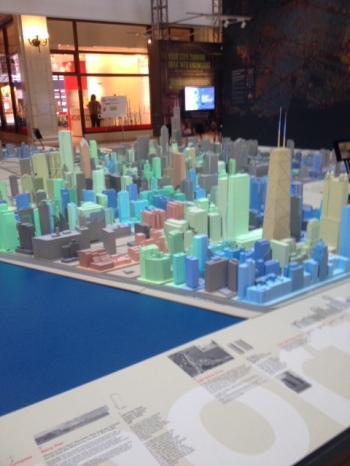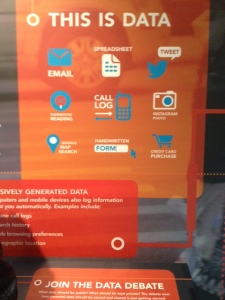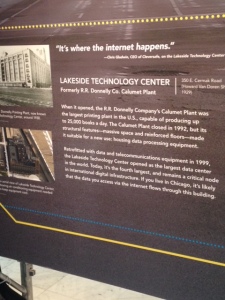
Anita Sarkeesian during an episode of Feminist Frequency
I first heard Anita Sarkeesian’s name when I was a sophomore in high school. I was just beginning to take an interest in feminism and joined a number of online communities that discussed the topic, such as Jezebel. A friend of mine who played video games told me about Anita Sarkeesian and her YouTube series, Feminist Frequency. My friend was a feminist as well and told me to check out the series. Although I have never been much of a gamer, I still was enlightened and inspired by her videos. By analyzing video games, she highlighted all the frustrating things I was beginning to notice about the society I lived in. While it made me extremely mad to realize how much sexism was present in the gaming world and all of society, it inspired me that Sarkeesian was not cynical, bitter, or hopeless about these things. She truly believed that by being critical of these aspects, a positive change could be made. A similiar theme emerged in her keynote speech on friday, where she discussed the vicious backlash she has faced online from angry gamers. From her speech, I realized that the world of gaming has become a subject that women are still being silenced on and the internet has become a powerful tool in this silencing. But Sarkeesian also explained how we as a society can change the world of gaming for the better as well as make the internet a safer and less oppresive place.
She began her speech with a clip from her first episode of Feminist Frequency, about the trope of the damsel in distress. She makes the specific disclaimer that it is possible to enjoy media while being simultaneously critical of it. The damsel in distress trope, she explains, keeps women from being heroes in their own right and makes them entirely dependent on a male hero. Additionally, they are usually placed in a sexualized role. It would be easy to say that these are “just video games” and don’t really matter in the big picture. But as Sarkeesian points out, the video game industry makes millions of dollars each year and is actually bigger than Hollywood. The demeaning representation of women in games is indicative of much larger problems in the gaming industry and in society. Astra Taylor writes that “…the Internet reflects and often amplifies real world inequities in striking ways.” The same concept can be applied to video games. Their content is a reflection of the attitudes of creators and consumers. Placing women in marginal and sexualized roles in games just shows that our society views women as sexual objects and ignores their individual merit. We can see this inequity in the gaming industry, through the experience of game creator Zoe Quinn. Because she received a positive review from a gaming journalist, she was accused of sleeping with him. Her merit was reduced to her sexuality. Sarkeesian notes that there is a common assumption that if a woman succeeds in a male dominated field, she must be cheating or not deserve it somehow. The sexist content of video games and the lack of female characters also reflects how we see female gamers. Specifically, we ignore and demean their role as gamers. Sarkeesian notes that women are essentially told that games are “not for us.” When she was a child, her parents didn’t want her to have a Gameboy, because as the name implied, they were for boys. The marketing and content of video games is aimed solely towards straight males. This completely ignores the large number of female gamers (and as Sarkeesian points out, is a bad business practice.)
While Sarkeesian’s arguments and viewpoints may seem perfectly rational to most, a segment of the gaming community has decided that her videos are an attack on video games and gaming culture as a whole. They see her attempts to reform the gaming industry as ruining or “stealing” the gaming world from men. This has resulted in a terrifying and vicious digital vendetta against Sarkeesian. In her speech, she used her experience to explain how women are discredited, silenced, and attacked on the Internet. Women who speak up about feminism have faced violent backlash even back when they were protesting for basic voting rights. But the anonymity of the web makes it a new and powerful tool in attacking women. Sarkeesian has faced rape and death threats, hacking of her personal information, sexual harrassment in the form of lewd false images, impersonation, and slander. A number of conspiracy theories propose she has stolen money, brainwashed people, or even faked her own death threats. This is all because she made videos criticizing the misogyny in gaming culture. (This response certainly serves to reinforce her point.)
Online communities such as 4-chan allow angry gamers to gang up on Sarkeesian without fear of being caught. They can abuse and humiliate her without ever coming in actual contact with her. They can easily spread a large amount of misinformation and rumors, making them appear as truths. They make Sarkeesian out to be a radical and irrational man-hater in order to discredit her and feminism as a whole. The sexual nature of the attacks on her also reflects an attempt to humiliate and demean her into nothing but a sexual object. And Sarkeesian reminds the audience that she is far from the only case of backlash against women. When Jennifer Hepler criticized Grand Theft Auto for being sexist, she was harassed into leaving her job at Bioware. A simple tweet from Adria Richards led to death threats. There is a trend of zero tolerance to women expressing their views online or taking aim against sexism. Anything that attacks the status quo is met with violent resistance from those invested in it. The idea of gaming changing is highly threatening to the people attacking Sarkeesian and as she says, they would rather believe ridiculous conspiracy theories than confront their views.
While all of this is highly angering, Sarkeesian still seemed calm and collected as she discussed her experience. It was so inspiring to see that everything she faced has not made her give up. She says that although there are days she feels like leaving gaming altogether, she still loves and enjoys video games. Sarkeesian believes that the industry is changing and beginning to recognize the role of female developers and gamers. Much of this backlash is just an angry reaction to the larger changes occuring in the video game industry. She also sets forth ways in which the online harassment and assault so many women face can be combatted. Laws need to be updated to include gender based hate speech and cyber civil rights need to be established. Harassment, stalking, and invasion of privacy have extended to the web and the law needs to better address this fact. The internet can be a tool of harassment and assault against women but it doesn’t have to be. The same is true of the sexism in video games. The most important thing we can do, Sarkeesian notes, is listen to and believe women about their experiences rather than silence them. That is what will ultimately create a more equal and respectful world online and in gaming.


